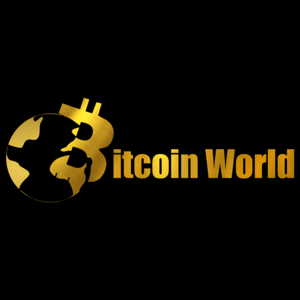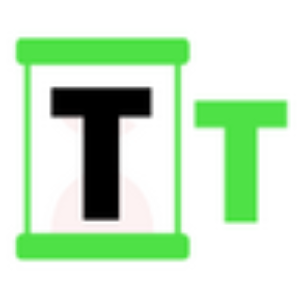Bitlayer Unleashes Powerful Monad Integration with BitVM Bridge
5 min read
Big news is brewing in the blockchain world, especially for those keeping a close eye on how Bitcoin is expanding its reach beyond its foundational layer. The promising Bitcoin Layer 2 network, Bitlayer, has just announced a significant step forward in interoperability, forging a crucial link with the burgeoning Monad ecosystem. What’s Happening: Bitlayer Integrates with Monad Testnet In a move set to enhance cross-chain capabilities, Bitlayer has officially integrated its innovative BitVM Bridge with the Monad Testnet. This announcement, shared via Bitlayer’s official Medium blog, marks a key milestone in connecting the Bitcoin ecosystem with the wider world of EVM-compatible blockchains. Why is this integration noteworthy? It’s all about creating seamless pathways for assets and liquidity. Specifically, this integration allows users to: Bridge vBTC (virtual Bitcoin) from the BitVM Bridge testnet directly to the Monad Testnet. Enable the minting of YBTC, a wrapped version of Bitcoin designed for use within the Monad ecosystem. This development is particularly exciting because it bridges a Bitcoin-native Layer 2 solution with an emerging, high-performance Layer 1 blockchain that boasts EVM compatibility. This means bringing Bitcoin liquidity and assets into a vibrant decentralized finance (DeFi) environment. Understanding the Key Players: Bitlayer, Monad, and the BitVM Bridge To fully appreciate the significance of this integration, let’s quickly break down the core technologies involved: Bitlayer: Positioned as a leading Bitcoin Layer 2 solution, Bitlayer aims to provide scalability, security, and Turing completeness to Bitcoin, enabling a new wave of decentralized applications and financial services directly on top of the Bitcoin network without compromising its core principles. Monad: Monad is an upcoming Layer 1 blockchain designed for ultra-high performance. It is fully EVM Compatible , meaning it can run smart contracts and decentralized applications built for Ethereum, but with significantly higher transaction throughput and lower costs. This makes it a potential hub for future DeFi and Web3 activity. BitVM Bridge: This is Bitlayer’s mechanism for facilitating the movement of assets, particularly Bitcoin and Bitcoin-derived assets, between the Bitcoin Layer 1, the Bitlayer Layer 2, and now, external chains like Monad. It leverages the power of BitVM, a concept that allows for complex computations and verification on Bitcoin using its existing scripting capabilities. The integration of the BitVM Bridge with the Monad Testnet is a practical demonstration of how these different blockchain layers and ecosystems can interact, creating a more connected and efficient decentralized landscape. Why Connect Bitcoin Layer 2 with EVM Compatible Chains? You might wonder, why is it important for a Bitcoin Layer 2 like Bitlayer to connect with an EVM Compatible chain like Monad? The answer lies in expanding possibilities: Access to Liquidity: Bitcoin holds the largest cryptocurrency market cap, representing vast potential liquidity. Bringing this liquidity onto high-performance EVM chains opens up new avenues for DeFi, NFTs, and other applications. Expanded Use Cases: While Bitcoin Layer 2s add functionality to Bitcoin, EVM chains have a mature and diverse ecosystem of dApps. Connecting allows Bitcoin assets to participate in this broader ecosystem. Developer Synergy: EVM compatibility means developers familiar with Solidity and Ethereum tooling can easily build applications that utilize Bitcoin assets bridged via Bitlayer. Cross-Chain Interoperability: The future of blockchain is likely multi-chain. Bridges like the BitVM Bridge are essential infrastructure for enabling seamless asset and data flow between different networks. This integration is a clear signal of Bitlayer’s ambition to position itself not just as a scaling solution for Bitcoin but as a gateway connecting Bitcoin’s value to the broader crypto economy, starting with high-potential networks like Monad. What Does This Mean for Users and Developers? For users interested in exploring cross-chain opportunities, this integration on the testnet provides a sandbox environment. They can experiment with bridging vBTC and minting YBTC, getting a feel for the process before it potentially goes live on mainnets. This is a chance to become an early explorer in the intersection of the Bitcoin and Monad ecosystems. For developers, the integration means that building on Monad could potentially involve leveraging Bitcoin-backed assets made available through Bitlayer. This expands the design space for dApps, allowing for more complex financial instruments and services that incorporate the value of Bitcoin. Actionable Insights: How to Explore the Integration (on Testnet) While this is currently on the testnet, here’s how you might engage: Stay updated by following Bitlayer and Monad official channels (like their Medium blogs and Twitter). Look for specific testnet instructions or tutorials released by Bitlayer detailing the steps to use the BitVM Bridge to transfer vBTC to the Monad Testnet. Explore the Monad Testnet ecosystem to see what applications might utilize YBTC once bridged. Provide feedback to both teams on your testnet experience – this helps refine the bridge and integration before mainnet deployment. Remember, testnets are for experimentation. Assets used on testnets have no real-world value. Challenges and Considerations While exciting, like any cross-chain technology, there are considerations: Security: Bridges are complex and can be targets for exploits. Rigorous auditing and testing (which is what the testnet phase is for) are crucial. User Experience: Bridging assets across different chains can sometimes be complicated for new users. Simplifying the process will be key for wider adoption. Testnet vs. Mainnet: Performance and stability on a testnet don’t always perfectly translate to a mainnet environment with real value at stake. Both Bitlayer and Monad will need to address these aspects as they move towards a potential mainnet launch of this integration. Conclusion: A Bridge Towards a More Interconnected Future The integration of Bitlayer’s BitVM Bridge with the Monad Testnet is a significant step towards a more interconnected blockchain future. By creating a pathway for Bitcoin assets to flow into the high-performance, EVM Compatible environment of Monad, Bitlayer is helping unlock new possibilities for liquidity and application development. This move strengthens the narrative of Bitcoin Layer 2 solutions as essential conduits between the foundational security of Bitcoin and the dynamic innovation happening across other blockchain ecosystems. As the testnet phase progresses, the crypto community will be watching closely to see how this powerful connection evolves. To learn more about the latest crypto market trends, explore our article on key developments shaping Bitcoin price action.

Source: Bitcoin World



